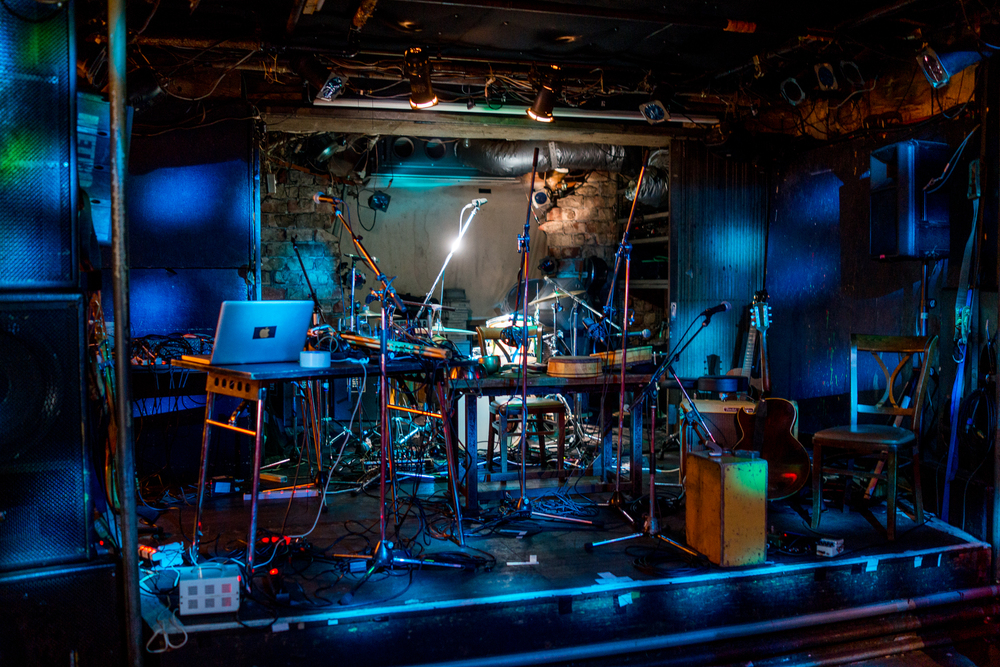How is brand new improvisation possible?Hiromichi Hosoma

What is improvisation? Every so often I feel the urge to explore this question anew. Essentially, improvisation is the spontaneous performance of a musical passage, unfettered by the players' own constraints. In reality, though, a good deal of improvised music is veiled in an idiom created through the long course of history. A quiet intro transitions into a segment of "interplay" that departs from the established structure to some degree but while maintaining a controlled rhythmic sequence. This has become a standard format for satisfying the audience. True, the devil is in the details--the performance is packed with the personal style of each player. All the same, the calculated interaction does evoke a sense of déjà vu.
How, then, is brand new improvisation possible in a setting that doesn't allow a prescribed format? Anyone tormented by this question would discover an innovative attempt at a solution in Asian Meeting Festival. It brings together artists working in completely different idioms and provides them with time for spinning the thread of music.
Asian Meeting Festival at the Kyoto Metro on February 12, 2016, presented five sessions by three artists each. The vertically long floor of the lower-level club was furnished with equipment on two stages set up along the opposite widths. The first trio played downstage, the second trio upstage, and so on. The arrangement was clever, I thought. It offered a good view of all of the players and a good sense of their signature styles.
The first session featured Yoshihide Otomo; Son X, from Hanoi; and Pete TR, from Bangkok. Son X produced the first sound, resembling the sound effects of a film, with marbles and a coarse sieve. Pete TR added to this the long whistles of the sho. Yoshihide Otomo then guided the other two musicians to layer their sounds over one another's, and a curious audio image emerged that reminded me of an endless loop of the ending of the Beach Boys' "Caroline No."
The second session was by Natalie Alexandra Tse, from Singapore; Yasushi Yoshida; and dj sniff, from Hong Kong. This was an interesting trio. While dj sniff played a parallel set of electronics and Yasushi Yoshida bopped up and down as he sang, Natalie Alexandra Tse contributed the unique melody of the guqin. Despite all the noise made by the first two, Natalie Alexandra Tse created a solid profile for herself using tremolo strokes and strumming the strings with a plectrum. Clearly she had an enormous amount of experience in her field of specialty with this ancient Chinese instrument.
With the ensemble comprising Skip Skip Ben Ben, from Taipei, who gives a beautiful solo performance of guitar and vocals; Fiona Lee, from Hong Kong; and Shinji Wada, I found it utterly impossible to imagine what might happen. Surprisingly, it turned out to be a pop guitar number. Fiona Lee made up phrases with the synthesizer on the spot, groping her way through long passages and building on them in loops. Shinji Wada created a drumbeat scattered with intellectual gaps. And finally, Skip Skip Ben Ben layered onto this her dreamy vocals. At one point, Fiona Lee was so moved by the performance that she started twirling a cord of light bulbs. This charge of emotion absolutely blew me away and made this group the highlight of the evening in terms of unpredictability.
Yuen Chee Wai, from Singapore; Krisna Widiathama, from Yogyakarta; and Katsura Mouri formed a trio that delivered unconstrained, unrelenting noise. Katsura Mouri worked the turntable so hard that it let out middle-low tone screams. The performance verging on sadism left me sympathizing with the turntable!
The final session was an overwhelming one by Okkyung Lee, from South Korea; Yong Yandsen, from Malaysia; and An Murazato. Okkyung Lee, controlling with remarkable precision a diversity of tones within the fast passages, showed one of the best performances of the day. Her cello at times blended and at other times contrasted with the percussive sound Yong Yandsen produced by tapping on the saxophone. Young An Murazato churned out one innovative passage after another on an ordinary drum set and injected new ideas into the improvisation. In the Tokyo leg at Spiral Hall, in Aoyama, I remember Okkyung Lee and Yong Yandsen supporting the ensemble and putting their skills into full play only during solos. Here in Kyoto, perhaps cheered on by An Murazato's decisive drums, they vied to make their sound stand out and fuse it with that of the others in an exhilarating performance.
Each session at the Metro, while brief, offered a good understanding of the players' techniques. And because each session featured a trio, it showcased the personal style of the individual musicians. Concerts like this test not only the musicians' skills but also the listeners' ears. We are forced to temporarily forget what we know about the idioms and formats that tend to veil jazz and improvisation, and tune into the artists of completely different backgrounds and how they might spin the thread of music. The event at Spiral Hall provided time for a group performance, where the focus was on the harmony of the whole. By contrast, that at the Metro allowed the players to spill sounds beyond the boundaries of the session, and explore an audio image they had never created before. I had forgotten to mention that the theme of this evening was "explosive sound." Now that I think about it, each of the musicians did play loud. But I think they delivered more than just quantity of sound. They delivered uninhibited quality of sound, and with this came hope for new possibilities of a "meeting."
Hiromichi Hosoma (human behavior scholar)
